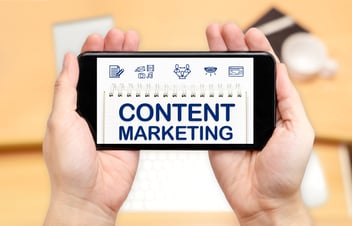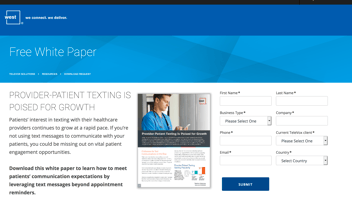How To Create And Implement A Cohesive Content Strategy

Your public relations department has press releases and contributed articles. Marketing has a handful of brochures and ad campaigns. Sales has developed product comparison sheets. And your customer service department tackled some FAQ on your company website.
You have content. But you may not have a cohesive content strategy. Each of those different departments is creating content in their own little world, and they might each be telling a different story about your business.
In order to present a consistent story to the world, you need to create a companywide content strategy that works together, across departments, from a prospect’s first introduction to your company through repeat business. (Click to Tweet)
The first two steps in creating a companywide content strategy are to identify your customer personas and to think through the buyers’ journey or sales cycle.
Those definitions will help you focus your content creation efforts on the “who” and “why,” but what actual pieces of content do you really need? That is where the next two steps in our six-step content creation strategy come into play.
Download our complete ebook on creating and implementing a companywide content strategy here and bring all of your efforts into greater focus for better results.
With your “who” and “why” answered, it is time to decide “what” — what content will you use to attract visitors, convert them into leads and nurture them toward a closed sale? In order to fill your content strategy with specific materials, you need to first audit your existing content resources, and then brainstorm ways of filling the gaps.
Step 3 in Creating a Cohesive Content Strategy:
Auditing existing content resources
Unless your company is a new start-up, or you are rebranding and taking a completely new approach, chances are that your public relations, marketing, sales and customer service departments already have some content to use as a beginning point.
Review all of the content you already have to create an inventory. Catalog all:
-
Blogs
-
Brochures
-
Website content
-
Videos
-
FAQs
-
Presentations and slide shows
-
Newsletters (print or email)
-
Case studies
-
White papers
-
Survey results or other research
-
Demonstrations
-
Sales proposal templates
-
Customer service materials
Then match your inventory to your buyer personas and the stages of the sales funnel to determine where you already have a strong content base and what areas need to be reinforced.
Step 4 in Creating a Cohesive Content Strategy:
Brainstorming new content ideas
Before you begin creating new content from scratch, remember that much of your existing content can likely be repurposed to reach a different persona, address a different stage of the sales funnel, or be presented in a different format.
Here are some ideas for doing just that:
-
Turn an individual FAQ question into a more detailed blog post. (There’s an example here.)
-
Expand on an existing blog post to create a downloadable ebook.
-
Use the video testimonial on your website as the basis for an email and social media campaign.
-
Use a product comparison sheet as a guide for a blog post on choosing a vendor in your industry.
This blog post has 8 more ways your marketing department can repurpose content from the PR team.
Once you’ve determined ways to save time and money by repurposing existing content, look again at your inventory. Do you have content that is designed to reach each persona at the top, middle and bottom of the sales funnel? Take it a step farther and plan out one or more campaigns for each persona, identifying how you would nurture them through the campaign with relevant and increasingly specific content.
Most companies will find that what they are missing is content for the middle of funnel: the usable content that helps visitors and leads solve problems. Typical middle of the funnel content includes calculators, templates, checklists and case studies.
As you fill out your content inventory, remember to utilize a variety of formats. Just as your personas may be seeking different information based on their experience, authority and position within a company, different people prefer to access information in different formats. While one prospect may be willing to download an read an ebook, another might pass right over that because they prefer to get their information in video format. Some people love to dive into lengthy, detailed blog posts, while others want a quick-to-read bulleted list or infographic.
Check this post for inspiration: 25 Offers to Appeal to Every Stage of the Buying Cycle.
Now, take all of your content resources and ideas, and determine specifically how you will use them. An inbound marketing campaign is a subset or off-shoot of your overall content strategy.
The next step (Step 5, if you’re counting) is to create calendars:
Couple those with our lead nurturing workflow template to plan the emails that go with each campaign also.
Another consideration (and Step 6 in our process): Decide who will create your content?
Are you ready to tackle a complete content strategy, and stop taking a piecemeal approach that doesn’t match up? Here’s how: Introduction to Creating a Companywide Content Strategy.
-1.png?width=1652&height=294&name=Jones(RGB)-1.png)












